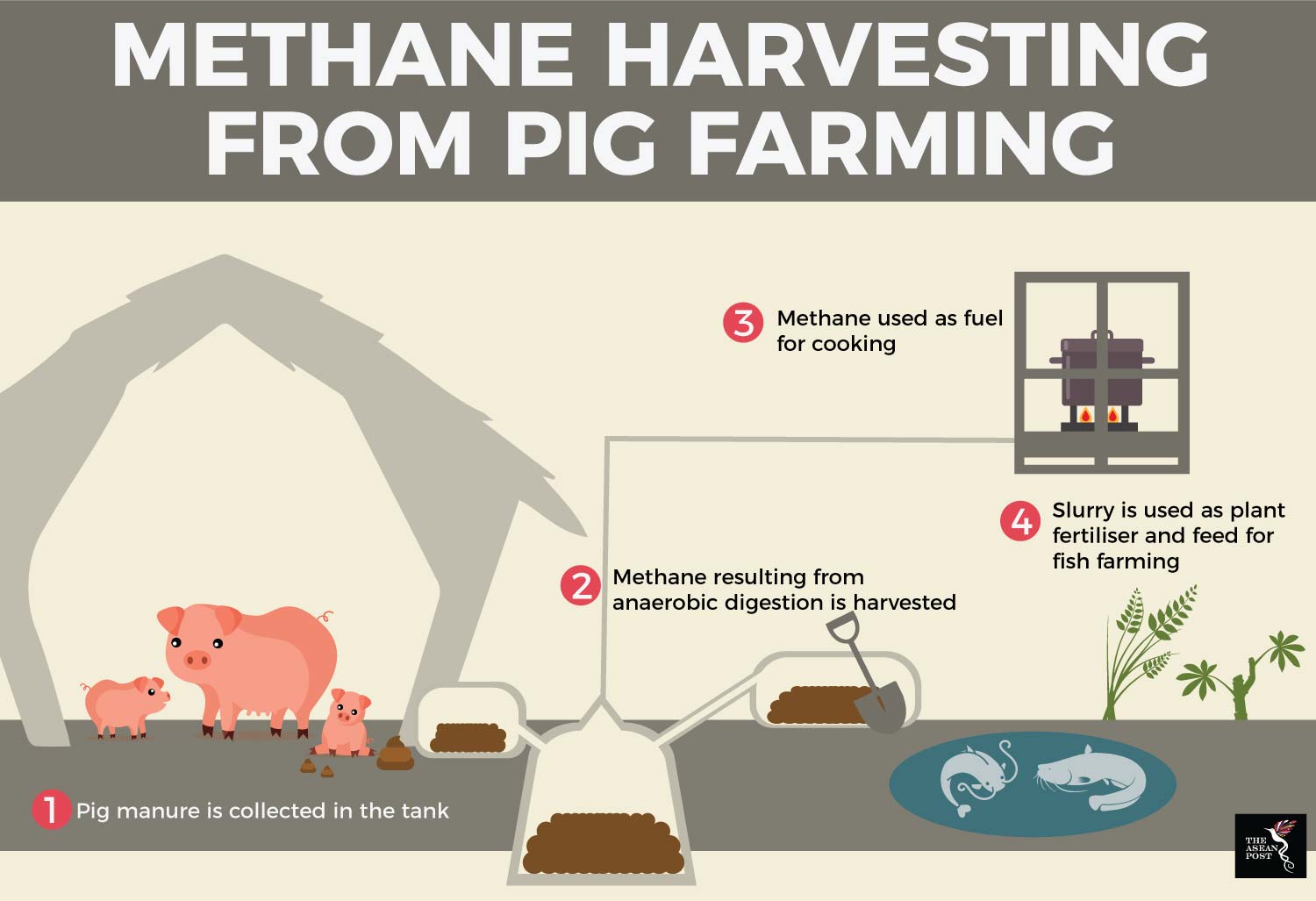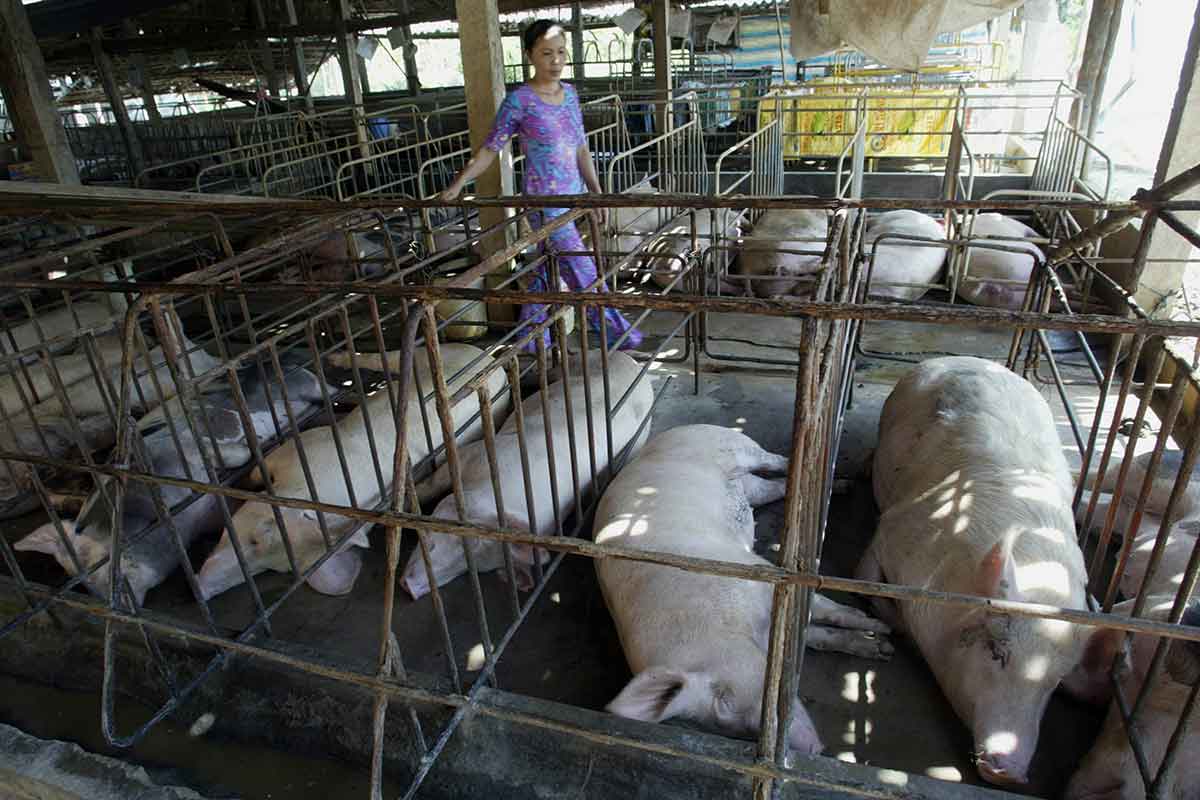Pork is an important source of protein in Vietnam. It represents more than 72.6 percent of meat produced in the country and provides livelihoods on small farms for more than four million people. The country’s improving standards of living and lifestyle changes has driven the increase in demand for meat with pork production reaching 29 million tonnes in 2016.
The growing Vietnamese pig production industry is ranked sixth in the world, and the waste produced as a result of it has put further strain on the environment, adding to the country’s greenhouse gas (GHG) emissions. Towards managing the impacts of the expanding pig industry, the Vietnamese government, in collaboration with international organisations such as Dutch non-profit organisation SNV, have been promoting the installation of biogas digesters to harvest methane from pig waste.
The initiative involves installing biogas plants on small pig farms, whereby the manure produced is stored in sealed tanks. The methane produced through the manure’s anaerobic digestion is then captured and used as cooking fuel. Burning of the harvested methane in turn produces carbon dioxide, which is also a GHG. However, methane is 21 times more potent than carbon dioxide in driving climate change.
Since the initiative started, more than 250,000 biogas digesters have been constructed in the country, contributing to Vietnam’s target of eight percent GHG emission reduction by 2030.
Climate, environmental, health and food security benefits
Vietnam’s national biogas programme, and its equivalents in India, China and other developing countries, are some of the best examples of synergies in climate change mitigation in practice. Beyond GHG emission reduction, the initiative delivers against many of the 17 sustainable development goals (SDGs). These include, but are not restricted to, Goal 2 – Zero Hunger, Goal 3 – Good Health and Well-being, Goal 7 – Affordable and Clean Energy, Goal 8 – Decent Work and Economic Growth, Goal 12 – Responsible Consumption and Production, Goal 13 – Climate Action, and Goal 15 – Life on Land.
In terms of cost effectiveness of emission reduction, according to climate change mitigation specialist, Mathias Varming, at the cost of US$500 to US$1,000 per unit, a household-scale digester can reduce GHG emissions by up to four to eight tons of carbon dioxide equivalent per year. The unit is expected to run for around 20 years. If the unit runs for 10 years, the cost effectiveness of emission reduction comes to around US$12.50/ton, which is better than the permits to emit GHG in Europe, which currently cost around US$23/ton.
“The harvested biogas is used directly by the household. This brings with it financial benefits, estimated by some to be around US$120 per year, or three to 10 percent of household income. There are immediate and substantial benefits to the household, even if there is no commercialisation of the GHG emission reductions,” said Varming.
Traditional wood-burning stoves which have now been displaced by methane-burning cookstoves are known to release fine carbon particles into the air and contaminating indoor areas. Household air pollution from inefficient cooking methods is a major cause of death from lung disease and heart problems for nearly four million people in poor countries each year.
The digesters also work as enablers for improving the livelihoods of the household as the digestion process maintains the nutritional properties of the waste, but drastically reduces the risk of pathogens, making it a good fertiliser for vegetables or fish farming. This can further improve the longer-term nutrition, food security and income potential of the household.

Source: Various sources.
Pig manure may be an unusual source of renewable energy, but the benefits are undeniable. An investment of the kind needed for establishing the biogas digesters may be considerable against the average income of small farmers. However, the resulting outcome of the pig manure methane harvesting programme simultaneously bolsters the country’s efforts in climate change mitigation and environmental management, as well as the attainment of good health, well-being and food security.
Related articles:
